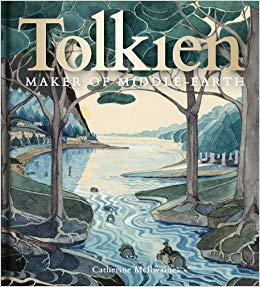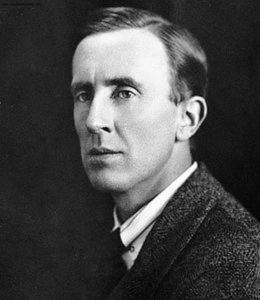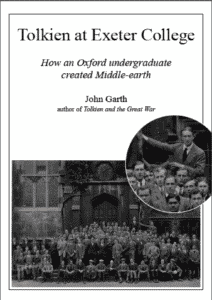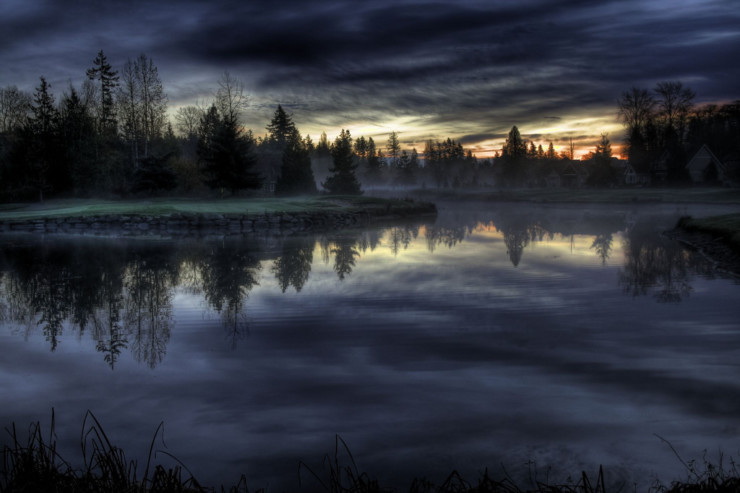I first read The Hobbit and The Lord of the Rings trilogy by J.R.R. Tolkien in college. The editions were likely the pirated ones controversially published by Ballantine; almost overnight it seemed everyone on campus was carrying their paperback copies. By the time I graduated, an authorized version of the books had been published in the United States, and I bought the hardbacks, which are well read and still on my bookshelf.
And the Peter Jackson movies from 2001 to 2003? My youngest son and I saw them three times each in the theaters, watched them again when the movies were available on CD, and watched them yet again when the extended version/director’s cut CDs went on sale.
I’m a fan, but I’m not a fanatical fan. I wore street clothes to the movie theater. I did not dress up as a hobbit, a wizard, an orc, Stridor, an ent, an elf, a dwarf, a balrog, or Shelob the giant spider.
The biggest Tolkien event since the movies is now underway in Oxford.

The title of the exhibition is Tolkien: Maker of Middle-earth. The catalog book created for the exhibition is one of the most beautiful contemporary books I’ve ever seen. It’s simply stunning. Catherine McIlwaine, the Tolkien archivist at the Bodleian, is the curator for the exhibition and the editor of (and a contributor to) the book catalog.
The book is introduced by six essays, including a biographical sketch by McIlwaine and an overview of Tolkien and the Inklings by John Garth, author of Tolkien and the Great War: The Threshold of Middle-earth. Other essays include a discussion of Tolkien’s perilous land of “faerie,” inventing Elvish, Tolkien and “that noble northern spirit,” and Tolkien’s art.

Tolkien in the 1920s, when he was creating Middle-earth
The essays are followed by nine sections of artifacts on display, closely tracking the nine sections of the exhibition. These include reading Tolkien, his childhood, student days, his sheer inventive genius, The Silmarillion, his teaching and lectures, The Hobbit, The Lord of the Rings, and Tolkien’s maps. Letters to Tolkien from readers are included, including ones from W.H. Auden, Lynda Johnson Robb, and Iris Murdoch. And who knew that songwriter Joni Mitchell asked and received permission from Tolkien to use the names Lorien and Strider for her music and publishing company?
The featured artwork and maps drawn and painted by Tolkien are standouts. As Wayne Hammond and Christina Scull write in their opening essay, Tolkien came from a generation when both boys ad girls of an upper-middle and upper classes were taught to draw. In Tolkien’s case, he continued drawing, painting and watercolors long after most would have set it aside. And we see book covers, posters, drawings, and illustrations that are often as striking as his writing.

Tolkien: Maker of Middle-earth is an artifact and a treasure in and of itself. Its main point is this: The Hobbit and The Lord of the Rings both arose from decades of creativity and inspiration, and are almost the tip of the iceberg that included extensive research, creation of languages, epic poetry, and creation of histories of elves, dwarves, hobbits, and men.
Author and essayist John Garth has also recently published a small book, more an expanded pamphlet, entitled Tolkien at Exeter College, an extended essay on Tolkien and his Oxford student days (1911-1915). It includes numerous photographs of Tolkien, his friends, and the students at Exeter, with an emphasis on the impact of World War I on their numbers. Several of his closest student friends would not return from the battlefields.
If you can’t make the exhibition at the Bodleian, the good news is that after it closes in Oxford it will be at the Morgan Library in New York City from January 25 to May 12, 2019.
I’m already checking flights into LaGuardia.
Photo by Andrew E. Larson, Creative Commons, via Flickr. Post by Glynn Young, author of the novels Dancing Priest, A Light Shining, and the newly published Dancing King, and Poetry at Work.
__________________________

“I require all our incoming poetry students—in the MFA I direct—to buy and read this book.”
—Jeanetta Calhoun Mish
- Poets and Poems: Katie Kalisz and “Flu Season” - April 15, 2025
- Poets and Poems: Michelle Ortega and “When You Ask Me, Why Paris?” - April 10, 2025
- Robert Waldron Imagines the Creation of “The Hound of Heaven” - April 8, 2025

Laura Lynn Brown says
I read The Hobbit when I was young, but I was well into adulthood before I could get into the trilogy.
Thank goodness people are still studying, gathering, organizing and presenting these things. I had no idea he was so adept at drawing and painting too. Thanks for including the video clip.
The exhibition on my list for the next trip to NYC. But it sounds like the catalog provides much for people who can’t get to one of the museums.
Glynn says
I’ve been to the Bodleian several times. The older exhibition space was a little on the small side. The Weston Building considerably expands the library and adds a large space for exhibitions. And another plus — the West Building is next door to Blackwell’s Bookstore, my favorite bookstore in the UK.
Bethany R. says
Thank you for this post. I absolutely loved reading through The Lord of the Rings (including all the details of its appendices).
I actually read the books because I fell in love with the movies. I would watch and rewatch hours of footage from the extended editions on mute with subtitles (although I adored the soundtrack) when I was up for middle-of-the-night feedings with my baby boy. His eyes were closed—but I had to keep mine open. Those films and books have a special place in my heart and memory.
I wish I could go see that exhibit.
Glynn says
We’ve been to England several times in the last six years, and this is the year we couldn’t go. But we are seriously considering New York City when the exhibition opens at the Morgan Library.
And I’m starting to hear the call of the rings. It may be time for another reading.
Megan Willome says
Yes, I want Glynn Young’s reread of LOTR! With NYC museum coverage!
I had no idea Tolkien was an artist either. And thanks for the video, with his words read so well.
I read the trilogy first, in sixth grade and read “The Hobbit” later. My son read all of them in elementary school, third or fourth grade.
Diana Trautwein says
I am embarrassed to admit that I have never read Tolkien and never seen any of the films. I tried the Hobbit in college, got about 50 pages in and gave up. I’ve since heard that it’s better to start with the trilogy. But my fantasy-reading days are pretty much behind me, I fear. I read all of L’Engle, much of Lewis, and most of LeGuin, but never Tolkien. Sigh. thanks for the tip, though. I’ll watch the video and see if it just might inspire me to try again.
lynn says
Fabulous, thanks for sharing! I’ve read The Hobbit and LOTR twice (first time in college) and have seen all the movies as well. I required my sons to read the books before watching the movies. Our pastor is on a sabbatical to Oxford to explore the worlds (and words) of both Lewis & Tolkien so I’m almost certain he viewed this exhibition.